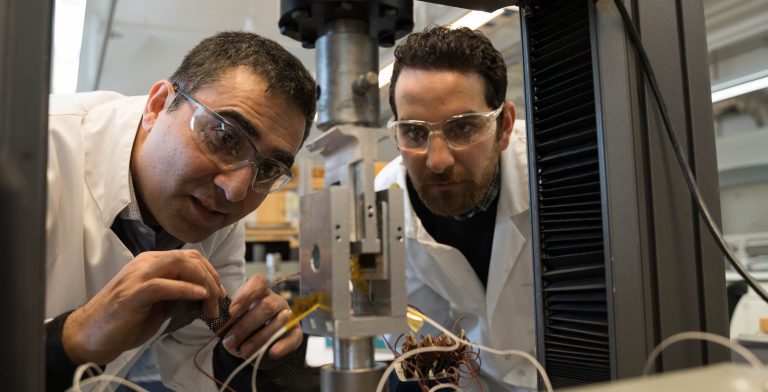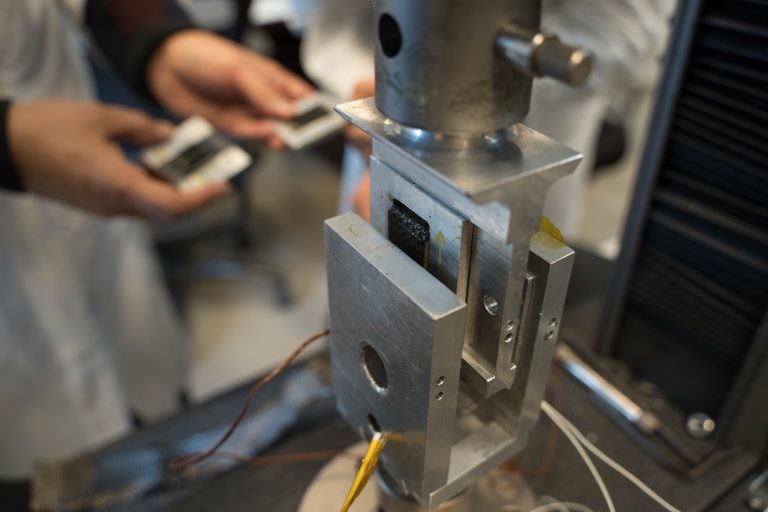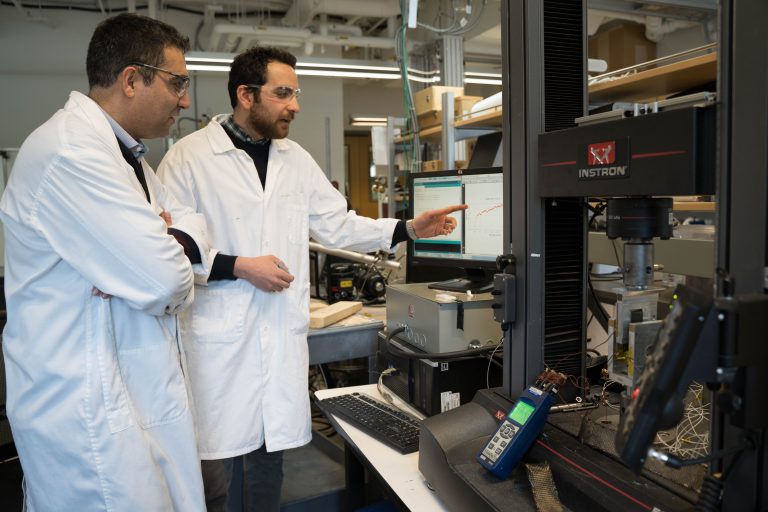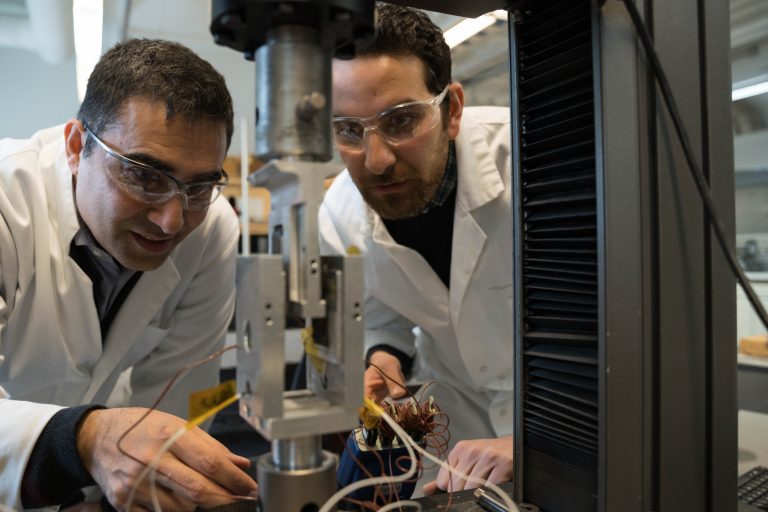Advanced manufacturing team works to eliminate potentially damaging processing flaws

Researchers at UBC’s Okanagan campus have created a custom-built device to assess the inter-ply resistance of peculiarly shaped, laminated fibre composite structures used to manufacture aerospace parts.
Woven composite materials are becoming more and more prevalent in the fabrication of aerospace composites because they are lighter than conventional materials and often easier to manufacture, says Abbas Milani, a mechanical engineering professor at the School of Engineering
Composite materials offer reduced weight while maintaining high strength and stiffness, as well as improved fatigue resistance when compared to a range of metallic counterparts. However, when multi-layers of woven fibers are formed into geometrically complex shapes, they can warp and wrinkle due to friction and compaction within the manufacturing process.

“We carefully study the entire manufacturing process to better understand the factors that can lead to a wrinkling defect in the final part,” says Milani, who is also the principal investigator of the Okanagan Node of the Composites Research Network. “As composite fibre plies are consolidated with a mixture of polymers, we investigate how each ply interacts with its neighbours and how it responds to the various stages of processing.”
Milani and his team have been developing custom-made characterization instruments that simulate the various stages of the fabric composites manufacturing processes. The goal is to determine how potential defects—which are often hidden—are formed within the final product, and how they can be mitigated at a minimum cost. By adding variables such as stretching and compression along with temperature and viscosity, the researchers now have more tools to investigate ways to improve complex composite structures.

“Results show us that inter-ply friction is one of the main drivers behind fiber-path defects such as wrinkling which deteriorates the mechanical properties of the final composite part,” says Armin Rashidi, the lead PhD student in this research.
Moving forward the team will feed the results into a numerical simulation tool that paves the way toward a reliable virtual framework to help with the prediction of wrinkling defects in woven composites.
“The outcome of this research can eventually be used to investigate a variety of processing conditions and manipulated scenarios to assess their impact on the quality of the final product,” says Rashidi. “And ultimately use these optimization schemes to create defect-free composite parts”.

The research was funded by the Natural Sciences and Engineering Research Council of Canada with assistance from Boeing Canada, and published in the Journal Composites Part A: Applied Science and Manufacturing.